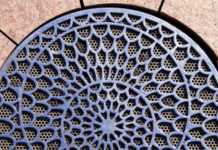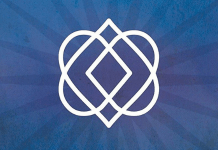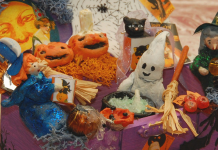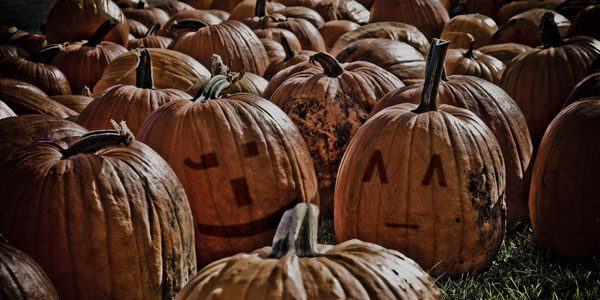 As the days get shorter, the nights longer, and the temperature drops, most of us begin to look forward to Hallowe’en or Samhain, one of the days most celebrated by of occultniks of all flavours.1 Many are likely used to hearing that the fall celebration is “the Devil’s birthday” or some variation thereof that alludes to the holiday being “evil.” Oddly enough, it is in a way the “Devil’s birthday,” but not in the way that people opposed to the celebration think.
As the days get shorter, the nights longer, and the temperature drops, most of us begin to look forward to Hallowe’en or Samhain, one of the days most celebrated by of occultniks of all flavours.1 Many are likely used to hearing that the fall celebration is “the Devil’s birthday” or some variation thereof that alludes to the holiday being “evil.” Oddly enough, it is in a way the “Devil’s birthday,” but not in the way that people opposed to the celebration think.
Hallowe’en is a much misunderstood holiday that, coincidentally, is shrouded in a lot of mystery and misinformation. There are many things that people believe about the holiday that are based on historical fact, while many other things grow out of misunderstood beliefs. Various myths, legends, and folktales have been ascribed to the day and are now just considered to be part of the celebration, even though the roots of it lie elsewhere. From why apples are a seasonal favourite, to the idea of witches and their black cats, when it comes to Hallowe’en, few things in it’s long history are as clear as they seem.
There are, however, some truths to the holiday that are undeniable. These are best summed up by Lisa Morton in her book, Trick or Treat: A History of Halloween:
The unassailable facts of Halloween are fourfold. First, it boasts both a Pagan and Christian history. Second, its position in the calendar — at the end of autumn/beginning of winter — means it has always served in part as a harvest celebration. Third, it is related to other festivals of the dead around the world, and so has always had a somber, even morbid element. Finally, however, its combination of pagan New Year celebration and joyful harvest feast have also given it a raucous side, and it has almost always been observed with parties and mischief-making.”2
Still, even within these four guidelines, there’s a lot of misinformation that needs to be unpacked.
What is Hallowe’en?
Cultures around the world tend to celebrate some time of the year in which they believe that the veil between worlds is thinner, and spirits may more freely walk the earth. This thinning time tends to be observed from the time of the equinox, when the days begin to get shorter and the nights longer until around Beltane or May Day, when the days begin to get longer again.
Despite this shared history, in the west the celebration is primarily based on two very specific things: the Celtic holiday Samhain, and a smear campaign by the Church of England against the Vatican. Primarily, the timing of the season, 21 October, comes from the Celtic tradition of Samhain which was originally a three-day celebration. However, it was vastly different from what we associate with Hallowe’en today. Most of what we considered standard for the now spooky season actually comes from the Church of England and appeared in the 1500s.
The original Samhain celebration was more of a New Year’s event in which old debts were settled and taxes for the year were collected. Since it coincided with the end of farming season, there were feasts and the like as well as some spiritual rituals, however, the celebration was more like a federal holiday than a religious one. Closer to Thanksgiving or the 4th of July, than Christmas or Easter.
The idea that Celtic Druids worshipped some god of death came from a writer by the name of Charles Vallancey who published three volumes on the ancient Celts and their traditions.3 It was from these works that the idea that the Celts worshiped a god named “Balsab” came from.4 Vallancey was completely incorrect and his work was discredited in his lifetime, but the idea that Samhain was devoted to death stuck.
Obviously, the Catholic Church didn’t share the idea that the dead literally walked the earth during the summer’s end, however, they did settle on the same time of year to celebrate All Souls and All Saints Day. Though the church in no way condones any sort of Pagan beliefs, their own holiday is undeniably rooted in these same Hallowe’en traditions. The fact that the celebration of Samhain and All Saint’s and All Soul’s Day coincided with one another, has a great deal to do with how we celebrate Hallowe’en today.
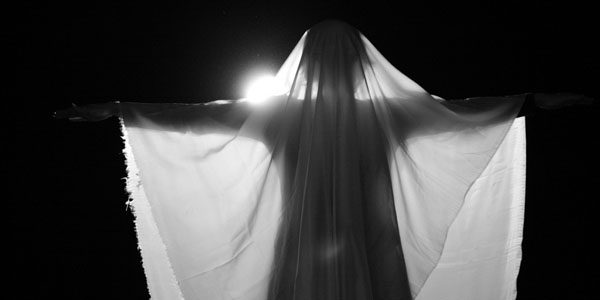
Ghosts and spirits roam the earth
There are various myths and reasons for a belief that spirits and ghosts roam the earth at this time of year, but they all generally stem from the idea that the sun, as a deity, has lost their battle with their enemies and darkness, or evil, is temporarily winning. You can find similar myths that come from Egypt, Japan, Indigenous cultures, and Ireland. They all feature characteristics that are unique to them, however, the base story remains the same.5
This idea of the sun “losing” is where the concept of spirits roaming the earth comes from so it is no wonder that that the idea of “ghosts” and a focus on ancestors remains a constant one. However, this particular aspect as very little to do with the Samhain holiday.
The idea of ghosts and spirits is one that persists for the autumn and winter seasons. During the totality of the darker months it is thought that there is more “spirit” activity. Some traditions believe that these are the dead come back or “demons” such as what is found in the Greek, Egyptian, or even Japanese stories while others think it’s the time of fae folk and the like. The focus on them being strictly a Hallowe’en attribute is much more recent, towards the 1900s when the holiday was more commercialized and made more for children.
Here comes the Devil and his cadre of witches
The Devil was born on Hallowe’en.
People say this as a way to prove the holiday is evil and although it can be seen as one of the truer statements about Hallowe’en, it isn’t exactly the whole story, nor is the statement entirely correct. The Devil wasn’t born on Hallowe’en, he was created, but not by any Pagans. The Devil as depicted with the horns, red skin, and goat legs is part of the battle between the Church of England and the Vatican as are most of the myths of witchcraft during the season.
When King Henry VIII couldn’t get a divorce he decided to cut ties with the Vatican. All Saint’s Day which shares time with Samhain is a papal holiday and was therefore banned to be celebrated.6 Over the years, as the Protestant church began to target “witches” (most people accused were common folk or political targets), ideas of Hallowe’en being a special sabbath for the dark arts began to form. ((Morton, Trick or Treat, 23.))
People began to believe such fantastical ideas such as if looking “… through the church door on Hallowe’en they would see the Devil preaching his doctrines from the pulpit, and inscribing the names of new witches in his book.”7 Over time, the stories grew and various regions had their own terrible witches to plague them. Some even took the form of animals thus furthering ideas of the supernatural.8 Although these beliefs became common, it is important to note that they had nothing to do the roots of Samhain and were fabricated and added by the Church to further their own ends.
Although it is commonly believed that powers of divination and the like become stronger during the fall and into winter, this is seasonal and not dedicated to the particular day of Hallowe’en. The Devil as depicted is likely a perversion of the horned gods found in various religions, usually associated with fertility. Which makes sense as to why witches are often said to be copulating with the Devil. Again, however, though there are some very loose ties here, acts of evil or the Devil are not at all associated with the traditional celebration of Samhain and were added much later by the Church.9
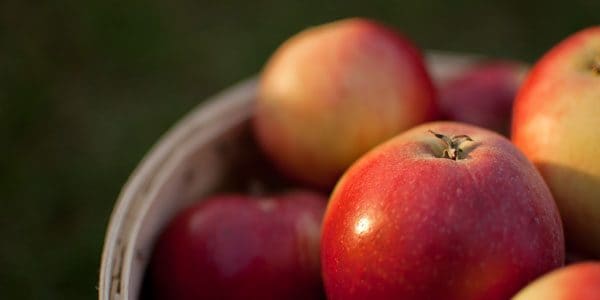
Apples, pumpkins, and the harvest
In our modern world, Samhain is associated with the end of the harvest season. In fact, many churches, schools, and offices have “harvest parties” instead of Hallowe’en parties (in order to not offend their more traditionally religious participants).
Much of the imagery we see around Hallowe’en has to do with this as well and although Samhain was not specifically a harvest festival, there is no doubt that the end of the growing and farming season played a big part in how it was celebrated. It is actually when we look at the inclusion of harvest features that we can more clearly see how Hallowe’en is really a creation of the combination of many folktales and beliefs.
For example, apples (and nuts) play a huge part in the history of Hallowe’en as a common treat that is given in celebration. It was commonly believed that the inclusion of the fruit was based on the myth of Pomona and Vertumnus, two Roman gods. Pomona was a goddess of fruit who had decided to never marry while Vertumnus was one of her many suitors. He changed into many forms, which represented the passing of the seasons, to win her heart.10 So, we eat apples to honour them, which sounds very sweet but it’s not true. Neither of the gods had anything to do with the season.
That being said, apples and nuts still persist as common food that is given out. There are many apple based rituals to find out who loves you and whether your love affair will last that were done during Hallowe’en. They also appear in more modern myths such as apples stuffed with razors meant for trick-or-treaters. This not unlike the idea that symbols such as the Jack O’Lantern are really just a way to instill fear into early ceremonies meant to celebrate life.11 By adding a sense of fear to these traditions over time they become taboo and far removed from their original practice.
The idea of “Hallowe’en sadism” is one that has persisted in headlines since the ’50s but is greatly exaggerated as a threat.12 Threats of razor blades, drug-laced candies, and other supposed dangers are myths. Although there have been incidents reported to the police around concerning these sorts of complaints, they have resulted in only minor injuries or, in the very few fatal cases, upon further investigation were actually the fault of a member of the child’s family, not a stranger handing out dangerous goodies.13 Much like most of Hallowe’en, this persistent idea is just a myth.
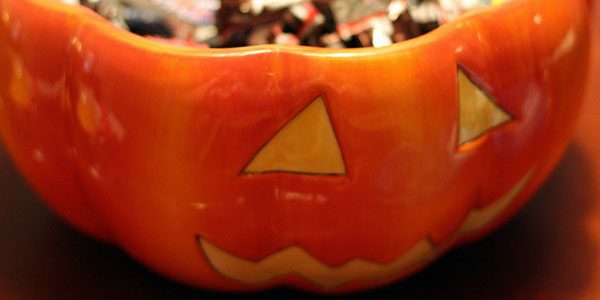
Trick or treat and it’s all just a big party
One thing is for certain, Hallowe’en regardless of if you called it Samhain, All Saint’s or Soul’s Day, All Hallows Eve or something else, has always been a time for celebration and some amount of remembrance. Whether it was for the bounty of the past year, debts you owe, or people you love, these have been part of the celebration since it’s very beginnings.
Where the idea of giving treats, in general, came from seems to have various roots. Children in Wales went door to door for All Soul’s Day collecting treats but as early as the 1400s, small gifts were left out for “little people,” which meant the fae folk, which could have eventually evolved into giving treats to children. The practice of leaving gifts for little people was meant as a form of protection from their mischief during the winter season.14
The tradition of candy, specifically, is entirely commercial and began in the 1950s as a way for candy companies to make money. Prior to that, children received small gifts of fruit, nuts, and coins for example.15
The idea of the holiday as a celebration has been one that has been there from the start. As explained early on, it was a New Year’s celebration, meant to be a joyous event. In the 17th century, costumes were added by young people in London who also held dances with their friends, but considering the times, it is unlikely that they called these Hallowe’en parties. Perhaps they told everyone they were having a “harvest dance” instead.16
Many Western cultures incorporated masks in their celebration but it wasn’t until the 1900s in the United States that the celebration became what is now more commonly known as “Halloween.”17 It was at this point in history that it really became the mainly commercialized holiday that is celebrated all over the world.
Hallowe’en today, Pagan or not
Whether you’re a practitioner or not, once the leaves start changing, it officially becomes Hallowe’en season. The myths and half-truths that plague this season are as plentiful as the decorative gourds at every farmer’s market. The holiday has changed drastically from its early roots but there’s nothing sinister about it, except for those myths added later.
Although honouring the farming season is a time-honoured tradition during the season, honestly, what the history of Hallowe’en tells us is that you’re free to partake in the holiday however you want. It has been changed and altered so much over time that a variety of beliefs can find hold in it — whether spiritual, or secular.
Bibliography
Best, J., and G.T. Horiuchi. “The Razor Blade in the Apple: The Social Construction of Urban Legends.” Social Problems, issue 32, volume 5 (1985): 488-499.
Kawash, Samira. “How Candy and Halloween Became Best Friends.” The Atlantic, 21 October 2016.
Kelley, R. E. The Book of Hallowe’en. Boston: Lothrop, Lee & Shepard, 1919.
Morton, L. Trick or Treat: A History of Halloween. London: Reaktion Books, 2012.
Pajeon, Kala and Ketz Pajeon. The Candle Magick Workbook: Why and How Candle Magick Works. Secaucus, NJ: Carol Pub. Group, 1991.
Image credit: Dan Bergstrom, Jordi Carrasco, Dave Gunn, and CarrieLu
- See Psyche’s “Occultnik manifesto.” [↩]
- Lisa Morton, Trick or Treat: A History of Halloween (Reaktion Books, 2013), 12. [↩]
- Collectanea de Riebus Hibernicis vol I-III, by Charles Vallancey. [↩]
- Morton, Trick or Treat, 9. [↩]
- R. E. Kelley, The Book of Hallowe’en (Boston: Lothrop, Lee & Shepard), 5-6. [↩]
- Morton, Trick or Treat, 22. [↩]
- Kelley, Hallowe’en, 42-43. [↩]
- Kelley, Hallowe’en, 66. [↩]
- Morton, Trick or Treat, 23. [↩]
- Kelley, Hallowe’en, 7. [↩]
- Kala Pajeon and Ketz Pajeon, The Candle Magick Workbook: Why and How Candle Magick Works (Secaucus, NJ: Carol Pub. Group, 1991), 4. [↩]
- J. Best and G.T. Horiuchi. “The Razor Blade in the Apple: The Social Construction of Urban Legends.” Social Problems, issue 32, volume 5 (1985), 491. [↩]
- Best, “Razor Blade,” 490. [↩]
- Kelley, Hallowe’en, 40. [↩]
- Samira Kawash, “How Candy and Halloween Became Best Friends,” The Atlantic, 21 October 2016. [↩]
- Kelley, Hallowe’en, 41. [↩]
- Kelley, Hallowe’en, 89. [↩]


